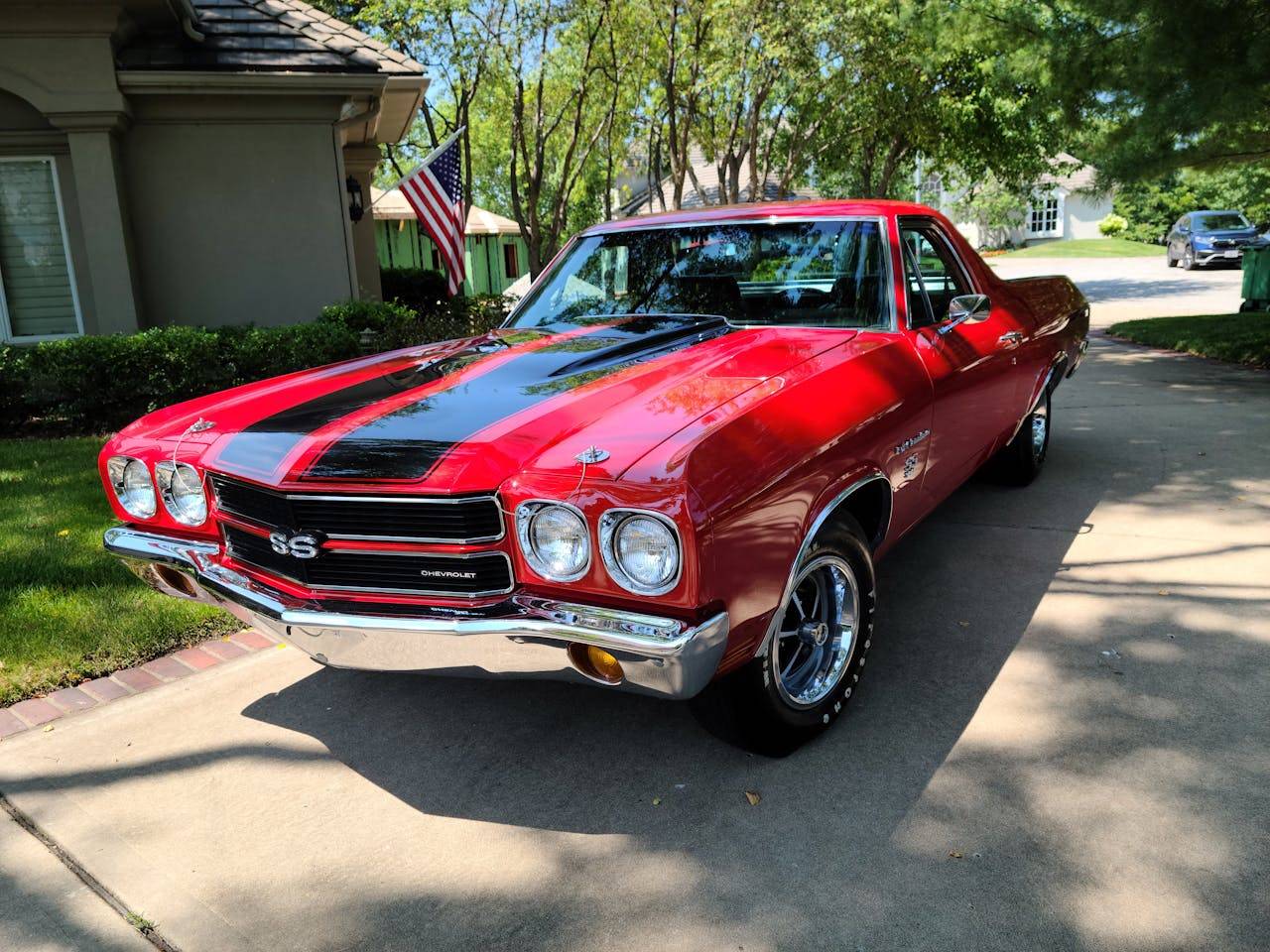Vintage Japanese cars have fans and collectors all over the globe. They represent not only an interesting part of history on their own but also an automobile history that is globally recognized for its reliability, innovation, and distinguished style.
In this post, we will examine some of the best vintage Japanese car brands, their history, their cars, and why they are popular among fans and collectors.
The Rise of Japanese Automakers
Beginning in the early 20th century, Japanese manufacturers created small, cheap cars for the domestic market. By the 1960s and ’70s, however, Japanese automakers started to make significant design and technology strides, developing world-class export strategies that propelled them into the consciousness of car enthusiasts all over the world.
JDM vintage cars from the 1960s and ’70s, especially, have become darlings of collectors and enthusiasts. Carscoop 4. First-generation Nissan Skyline250 GT (1957-1959).
The Best Vintage Japanese Car Brands
Toyota
One of the most well-known Japanese car brands is Toyota, founded in 1937 in Japan and known for its quality, durability, and innovation. The brand has become part of pop culture. In the field of vintage car market, the brand still survives as several of their productions have become historic and timeless due to their quality and good design:
Toyota 2000GT
Many consider the Toyota 2000GT racing car, made between 1967 and 1970, to be the first supercar built in Japan. Its shape is very modern, and it has a top speed of 200 km/h and a 2.0-litre inline-six engine, making it a powerful car.
In 1967, the 2000GT was featured in the James Bond film adventure You Only Live Twice, introducing it to an international audience. Today, the Toyota 2000GT is considered a classic.
Toyota Land Cruiser
Another is the Toyota Land Cruiser – the FJ40 series, produced from 1960 to 1984, with its go-anywhere all-terrain toughness and practical style.
This is one of the best-known and best-loved of the strong, solid, ring-around-the-wagon rigs that have become a fabric of the off-road, backwoods, paved-road, grooved-snow-and-ice culture of North America. Old Land Cruisers have become vintage collector’s cars.
Nissan
Nissan was formed in 1933 as Datsun. It has always built high-performance cars that were also stylish, and some of these vintage models are still collected.
Nissan Fairlady Z (Datsun 240Z)
The Datsun 240Z (or the Nissan Fairlady Z, as it was also known) was introduced in 1969 and immediately became a hit. Its sleek styling, inspired by Italian sports cars, packed lots of horsepower from its inline-six 2.4-litre engine in a relatively affordable sports car. Its US success helped make Nissan a viable sports car competitor.
Nissan Skyline GT-R
The Nissan Skyline GT-R, with its Hakosuka (boxy Skyline) variants from the late 1960s and early ’70s, is another famous car. The Skyline GT-R was a track racer officially, but its race-bred engines and chassis focused on delivering raw power for street driving excellence.
The cars went behind the Iron Curtain and created whole sub-industries selling parts for the Skyline GT-R. As a result, the Skyline GT-R became one of the best-known cars in the Japanese aftermarket, and it’s still in demand today from collectors and enthusiasts.
Honda
Founded in 1948, Honda has long built a niche for itself in the automotive marketplace with impressive engineering integrity and, dare it be said, mind-blowing design.
The company’s vintage machines are a shining example of Honda’s appreciation for mechanical innovation beyond the mainstream, and the brand’s history is now celebrated for providing unrelenting performance amidst evolving trends in contemporary automotive tech.
Honda S800
The Honda S800, a small sports car produced between 1966 and 1970, was another example of how Honda’s engineering prowess benefited design. The Honda S800 was a high-revving little car with a 791cc engine, quite power-dense for a car of its size; it had agile handling, as well as a stylish design.
Honda Civic
Honda’s current prominence as an honest-to-goodness car company had a lot to do with the 1972 debut of their first-generation Civic, a compact, efficient, well-designed, reliable, and fuel-efficient car.
In the US, a pre-owned, 35-year-old Civic is an affordable and environmentally responsible car, now simple and quaint but not retro yet. While a grease-smeared vinyl top might bark up an Amarillo Interstate to entertain us (and the helpless passengers in the back), no one can dispute the cooler, sportier, more modern, and hip appeal of Hemi muscle on a 1970 Dodge Challenger – after all, hipsters like to park next to one another.
Mazda: Rotary Revolution and Unique Design
Mazda, founded in 1920, is known for its approach to automotive design over the years. Mazda pioneered rotary engines and far more distinctive styling than its fellow Japanese carmakers.
These cars are now coveted as the longest-lasting vintage Mazda models, as consumers who recognize their marks champion them for their sheer differences—the way their exteriors and interiors looked and felt—the way they drove.
Mazda Cosmo Sport
The Mazda Cosmo Sport (currently known as the Mazda RX-9) was Mazda’s first production car with a rotary engine. Released from 1967 to 1972 and proclaiming itself the world’s first commercially available rotary car, it was inevitably this model that became the flagship of their cars because of this, along with its attractive futuristic looks.
The high-revving and smooth performance of the rotary engine gave the Cosmo Sport a popular appeal.
Mazda RX-7
Another sports car, the Mazda RX-7, produced in 1978, sealed Mazda’s image as a company willing to take technological risks. With its lightweight body and rotary engine, the RX-7’s balanced handling and performance were legendary. Though production ended in 2002, the RX-7 remains a classic for its racing successes and distinctive styling.
Subaru
Subaru – established in 1953 – has long been associated with its all-wheel-drive technology and rallying heritage. Its sporting reputation looks like it’s always been that way. Specialist car culture and online circles are full of references to past Subarus being examples of cars built to last, with a cult following for butch, functional 1990s, and ’80s analog machines.
Subaru 360
The only Subaru car manufactured before it was a car manufacturer, the Subaru 360 was the first mass-produced car created by the company between 1958 and 1971. This tiny vehicle boasted only 360cc in engine capacity, placing it firmly in the microcar category, and it drove on a light chassis.
The Subaru 360’s micro proportions and economy matched the fuel economy of its lightweight two-stroke engine. At the same time, it was affordable enough for Japanese people to own a car.
Subaru Leone
The Subaru Leone (rice) – introduced in 1971, was the first Subaru to feature its now-famous all-wheel-drive system – a simple and practical vehicle that laid the groundwork for Subaru’s later popularity in the all-wheel-drive niche. Old Leones have been discovered as they were, ready for a new life full of real adventure.
Mitsubishi
Mitsubishi, which began as an 1870 shipping company and entered automotive manufacturing a century later, has a long record of building technologies to win races. Its legions of dedicated enthusiasts cite its early cars – regarded as engineering triumphs – with great pride.
Mitsubishi Galant GTO
The Mitsubishi Galant GTO was a stylish and performance-oriented coupe manufactured by Mitsubishi Motors between 1970 and 1977.
The car featured a variety of powerful engines and an aggressive design. It was very popular among Japanese car enthusiasts and frequently performed well in motorsports, such as in the Japanese Touring Car Championship of 1974 to 1978.
Mitsubishi Lancer 1600 GSR
The 1973 Mitsubishi Lancer 1600 GSR was a key car in the birth of the company’s rally racing. The compact light car incorporated cutting-edge engineering and powerful performance, making it an enduring success. Today, vintage Lancer 1600 GSRs are highly coveted for their rally pedigree and iconic history.
The Enduring Appeal of Vintage Japanese Cars
There are many reasons for this: Vintage Japanese cars are economical and cost-effective, yet they haven’t sacrificed quality, design, or engineering. Furthermore, many Japanese automobiles also mark an era in history that holds a certain allure for some.
Aside from their historical significance and originality, many vintage Japanese cars drive differently than their modern counterparts, balancing performance, reliability, looks, and more.
Innovation and Engineering
The most critical factor, and probably the main reason vintage Japanese cars have kept (or gained) their value, is their engineering prowess.
Japanese automakers have long experimented with automotive technology, and their vintage cars are often packed with future-proof ideas for their era. Besides Mazda’s family of rotary cars, Subaru’s all-wheel-drive hardware has changed the game.
Reliability and Durability
Buying a vintage Japanese car can be a good idea. Like other models, vintage Japanese cars are generally well-built, reliable, and durable. This is one of their strongest selling points. Because vintage Japanese cars were made with top-of-the-range components, they were designed to last.
Vintage Japanese cars can still go on the road at a good speed, which is why some people collect Japanese vintage cars.
Unique Design and Style
Distinctive styling elements abound in vintage Japanese cars such as the Toyota 2000GT, the Datsun 240Z, and the Cosmo Sport from Mazda.
Cultural and Historical Significance
Vintage Japanese cars can be culturally and historically notable. They embody significant stages in the progression of the Japanese automotive industry, and they express broader social and economic tendencies past and present. Collectors tend to acknowledge and celebrate vintage cars for their automotive history as much as their performance and design.
In Short
Any vintage list of the best Japanese car brands tells a story of enduring excellence that continues to be relevant today. Toyota, Nissan, Honda, Mazda, Subaru, and Mitsubishi – vintage cars from each of these Japanese brands reflect an automotive pedigree that ranges from breakthrough technology to timeless design, each one that is so utterly Japanese in spirit, innovation, and style.








Leave a Comment